Marjoram is an herb that has a sweet, slightly minty flavor and can be used fresh or dried. You can grow Marjoram from seed, but starting with a young plant is easier. Marjoram likes full sun and well-drained soil. Once it’s established, it’s drought tolerant. Marjoram is a delicious and versatile herb used in many different dishes. Growing your Marjoram from seed to harvest is easy and rewarding.

There are many reasons to grow Marjoram from seed. For one, it is much cheaper than buying plants or starting from a nursery. Additionally, growing your plants allows you to control the environment they are grown in, ensuring they are healthy and free of pests and diseases. Finally, by growing your plants, you can be sure to have a never-ending supply of fresh Marjoram.
How to grow Marjoram from seed
How long will it take these Marjoram plants to grow from seed?
Marjoram is a fast-growing herb that can be started from seed. Marjoram can be grown in containers or on the ground. Using a well-draining potting mix if you are growing Marjoram in a container. Marjoram likes full sun but can tolerate partial shade. Water your plant regularly, letting the soil dry out between watering.
Marjoram seeds will emerge in 10 to 14 days. Fertilize your Marjoram plant every two weeks with a balanced fertilizer. To harvest your Marjoram, cut the stems to about 2 inches above the soil line. Harvest Marjoram leaves 4 to 6 weeks after they’ve been planted. You can dry or freeze the leaves for later use.
Harvesting of Marjoram
- Marjoram is a quick-growing herb that can be harvested just 60 days after planting. For the best flavor, harvest Marjoram before the plant flowers. To harvest, cut stems about 2 inches above the ground. Marjoram can be used fresh or dried.
- Harvesting your Marjoram is a simple process. If you are harvesting by hand, cut the stem at the base of the plant near the soil line. If using shears, snip the stem just above a leaf node. Marjoram can be harvested at any time during the growing season. Cuttings can be taken from both young and mature plants.
- Harvest the seed heads individually as soon as they turn brown and dry, and spread them out to finish drying in a location outside that is protected from direct sunlight. Thresh out Marjoram seeds by rubbing or shaking the heads, and remove as much chaff as possible.
In case you missed it: Growing Marjoram in Containers from Seed, Cuttings
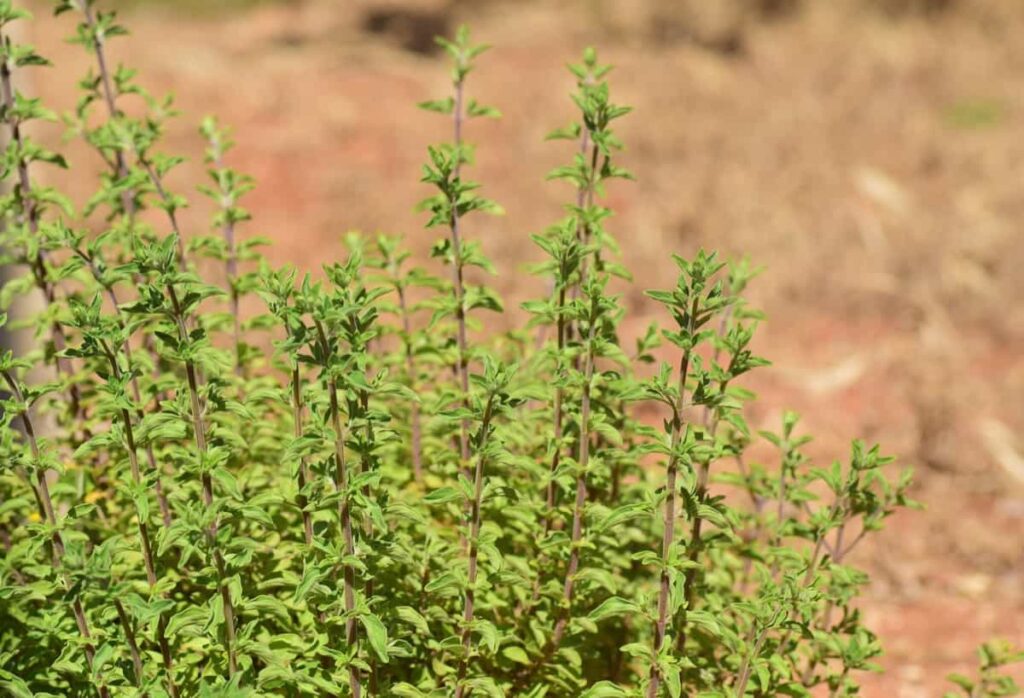
Should Marjoram be cut back?
- If you’re growing Marjoram for its leaves, you’ll want to cut it back regularly to encourage new growth. However, if you’re growing it for its flowers, you should cut it back only a little, or you’ll forfeit the flowers.
- There are two ways to deal with Marjoram. You can either cut it back or pinch out the growing tips once a month for new shoots. Be sure to cut your Marjoram back each spring and preserve its leaves for cooking. Once the plant has been pruned, leave 1inch to promote new growth or up to 2 clusters of true leaves. If you don’t prune your Marjoram pod, it will flower, so you can save the little flowers to use as a garnish on your dishes.
- In late spring, thin out the plant to encourage new vegetative growth and cut it again in midsummer so it doesn’t become woody. Marjoram can sprawl, so either cut it back or give it plenty of room to grow.
- Prune your plant in late spring before it flowers. Cut it back or give it plenty of room to grow in summer by cutting off the spent flower stem and some branches.
Propagation of Marjoram
- There are many ways to propagate Marjoram. You can start with seeds, cuttings, layering, or dividing. The optimum method depends on how large your plant is and how fast it’s growing. You should start with the seeds outdoors when the soil has warmed and there is no longer any danger of frost, preferably in the springtime.
- To propagate by seed, sow the seeds in well-drained soil in early spring. Cover the Marjoram seeds with soil and keep them moist. The seeds will germinate in 10 to 21 days. Once the seeds are sprouted, thin them to the spacing of 8 to 12 inches apart.
- To propagate by division, dig up an existing Marjoram plant in early spring and divide it into sections with a sharp knife or spade. Replant the sections immediately, ensuring that each has several healthy roots. Water well and keep moist until established.
- Take 4–6-inch stem cuttings from a healthy Marjoram plant in late spring or early summer to propagate by cuttings. Dip the cut end of the stems in rooting hormone and plant them in a pot filled with a well-drained potting mix. Keep the cutting moist and warm until they have rooted, which could take 1 to 8 weeks, depending on the variety of Marjoram. Once rooted, transplant to individual pots or outdoors to a sunny location with well-drained soil.
In case you missed it: How to Grow Pansies from Seed: Care, Planting to Harvest
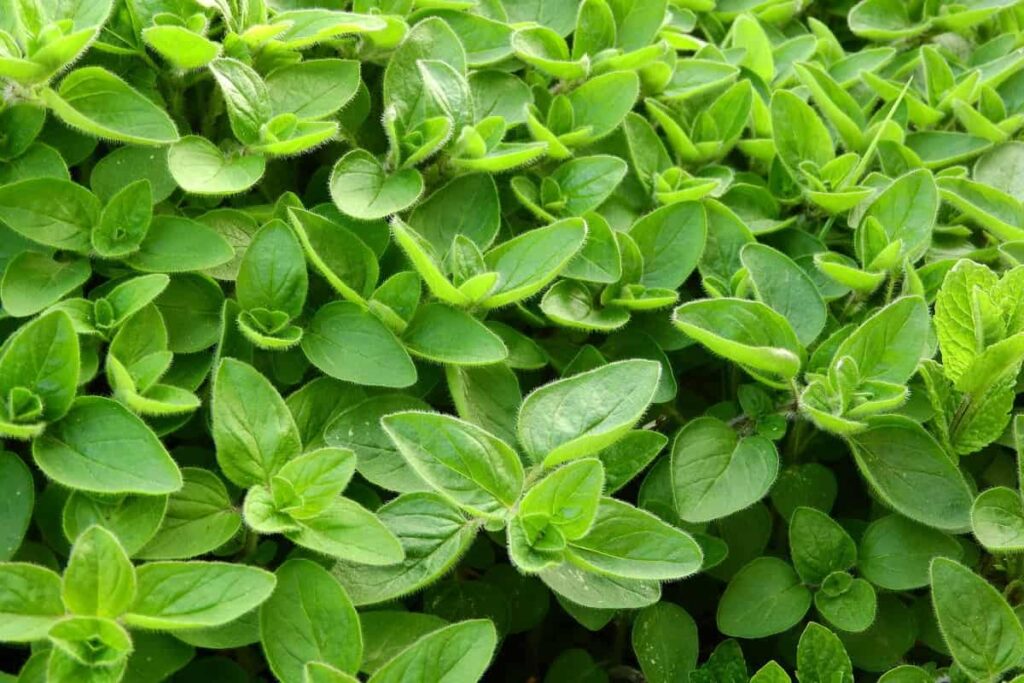
Sun requirement for growing Marjoram
- Marjoram plants need full sun, so you should give them at least six hours of direct sunlight most days. If you’re growing indoors, choose the window with the lightest.
- Marjoram prefers full sun but will tolerate some shade. It prefers well-drained soil and does not like wet or soggy conditions. Marjoram is a drought-tolerant plant, so it does not need much water once it is established.
Growing Marjoram in water
Cuttings of Marjoram should be rooted in water, sand, or a mixture of sand, peat, and perlite. You can root Marjoram in water, but it’s best to start with fresh, young plants. Cuttings from older plants may not take root as easily. Fill a glass or jar with clean water and insert the cutting to submerge the bottom inch.
Place the container in a sunny spot, and to keep it fresh, change the water every few days. Within a week or two, you should see roots growing from the base of the cutting. Once the roots are an inch long, you can transplant the Marjoram into a pot filled with moist soil.
Water requirement for growing Marjoram
- Marjoram doesn’t require much water. The soil should be well-draining and allowed to dry about an inch down before being watered again. Wet feet can kill the plant. Though there are drought conditions that Marjoram can handle, ensure it is watered regularly for the best flavor.
- Marjoram needs frequent watering, so don’t let it dry out. If you notice your plant beginning to get dry, remember to add a bit of water until the top 1 inch of compost is moist. The soil must be well-draining and dry about an inch down between watering. Wet leaves are Marjoram’s biggest enemy. It can handle drought conditions, but make sure it is watered regularly for the best flavor.
- Water your Marjoram plants regularly, especially during dry spells. Marjoram does best in full sun but will tolerate some shade. If you’re growing Marjoram indoors, place it near a sunny window. Fertilize your plant every two weeks with a half-strength solution of an all-purpose fertilizer.
In case you missed it: How to Grow Dill from Seed to Harvest: Soil, Propagation, Planting, and Care
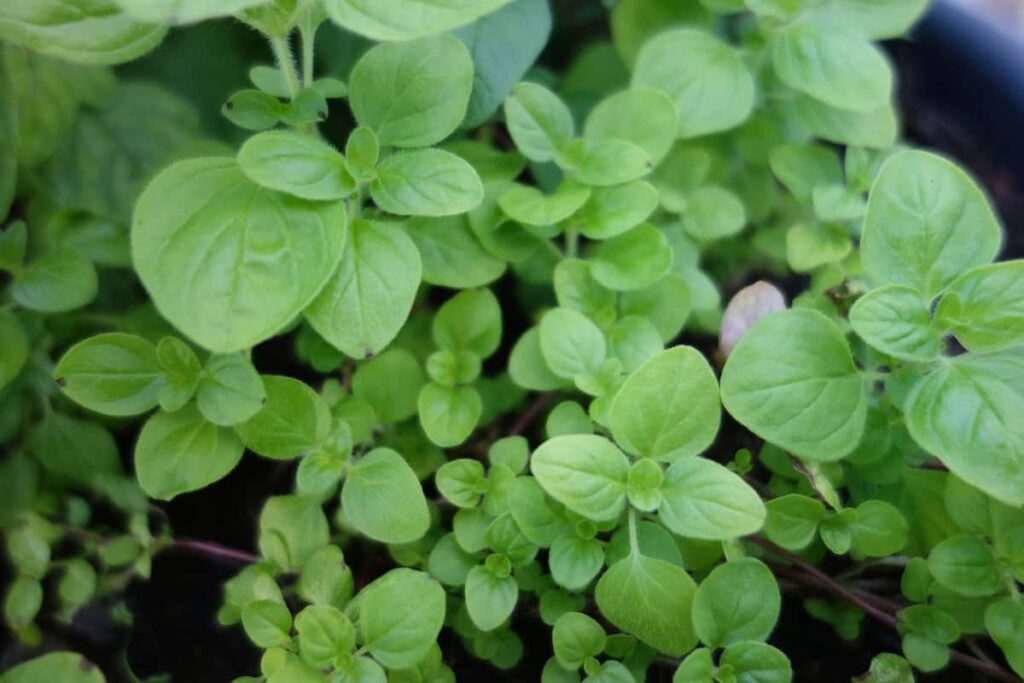
The best soil for growing Marjoram
- One of the easiest methods for growing Marjoram is to plant it in a pot filled with well-drained soil. Marjoram prefers fertile and loamy soil with a neutral pH of around 7.0, but it can handle a wide range of conditions, from 4.9 to 8.7. It also requires less water than other herbs. You’ll want to keep the soil well-draining and allow it to dry an inch between watering periods.
- The best soil for growing Marjoram is rich and well-drained. Marjoram prefers a sunny location but will also tolerate partial shade. If the soil is too dry, the plant will become stunted and produce fewer leaves. Water the soil regularly, especially during hot, dry weather.
- You can grow Marjoram in various soils, but it thrives in well-drained, sandy loams. If your soil is heavy or clay-like, consider amending it with organic matter to improve drainage and aeration. Marjoram also prefers a neutral to slightly alkaline pH level, so if your soil is acidic, you may need to add some lime to raise the pH.
How deep should you plant Marjoram?
- When growing Marjoram from seed, it is important to space the seeds correctly and ensure they are planted at the correct depth. Marjoram seeds should be spaced about 2 to 3 inches apart and planted at a depth of ¼ to 1/2 inch. If the seeds are planted too shallowly, they may not germinate. Once the Marjoram plants have emerged from the soil, thin them out and space them about 8 to 12 inches apart.
- To start your seedlings, mix gypsum, peat moss, and perlite in equal parts. Fill a large pot with your mixture and plant 1 to 3 seeds per small container. Keep the soil moist at 21°C. Once the seedlings start to grow, provide plenty of light on a sunny windowsill or under fluorescent lights turned on 16 hours each day, off for 8 hours at night.
Growing Marjoram in pots indoors
- If you’re short on space or want to try growing Marjoram indoors, it’s perfectly possible to grow this herb in pots. Marjoram is a low-maintenance plant that doesn’t require too much attention, making it ideal for beginner gardeners. Choose a pot at least 12 inches wide with drainage holes. You should fill the pot with a quality potting mix and water well.
- Before the last frost date, sow Marjoram seeds indoors for 6 to 8 weeks. Sow the seeds thinly on the soil’s surface and press down lightly. Keep the soil moist and the pot in a warm, sunny spot. The Marjoram seeds should germinate within 10 to 14 days. Once the seedlings have emerged, thin them, and they spaced about 4 inches apart.
In case you missed it: How to Grow Sage from Seed to Harvest: Planting and Care
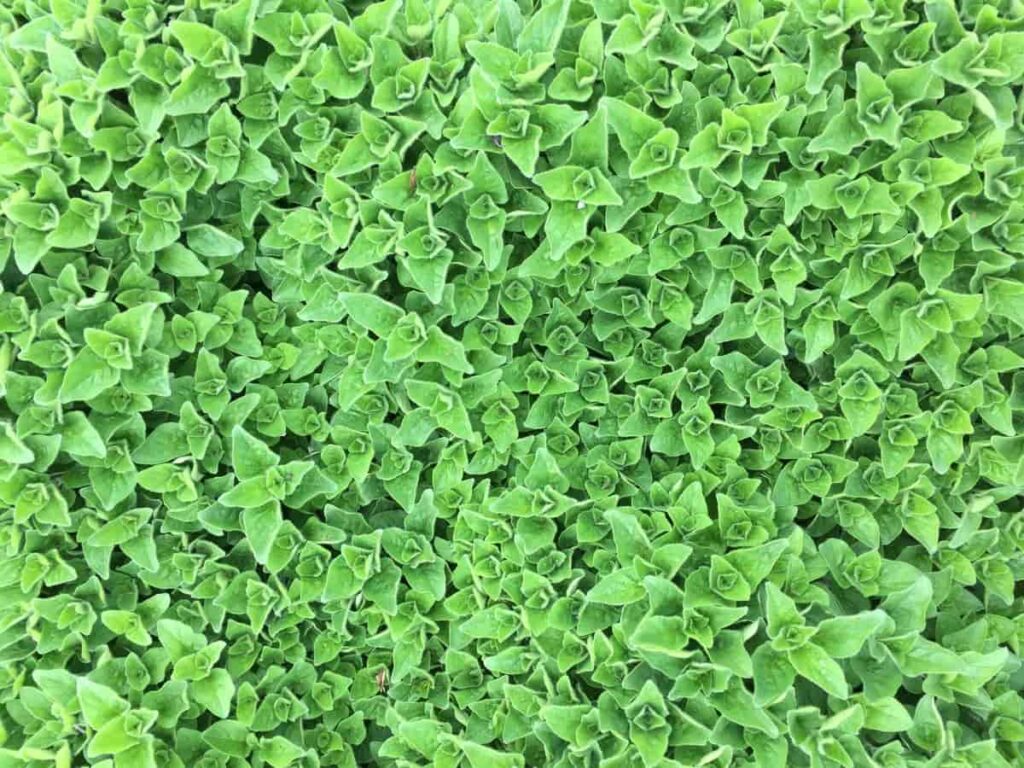
Best time to plant Marjoram
The best time to plant Marjoram is from mid-spring to early summer. Marjoram can be started from seed, but it is best to purchase young plants from a nursery. Transplant the plants into a sunny location with well-drained soil. Space the plants 18 inches apart. Water the plants deeply and regularly during the growing season. Harvest the leaves as needed for cooking or drying. Cut back the plants by one-third in late summer to encourage new growth.
Best time to harvest Marjoram
The best time to harvest Marjoram is in the morning after the dew has evaporated and before the day’s heat sets in. The leaves will be at their most fragrant and flavorful when harvested at this time.
Marjoram winter care
A native of mild Mediterranean climates, Marjoram plants grow best at temperatures between 15°C to 20°C. Avoid temperatures below 10°C. During mild weather, Marjoram plants grown indoors can be taken outside and placed in a sunny area. However, container-grown plants should always be moved indoors, or to another sheltered location once cold temperatures or frost are imminent.
The best fertilizer for growing Marjoram
Marjoram can be grown from seed, but it is easier to start with a young plant. Marjoram prefers full sun but will tolerate some shade. It is a drought-tolerant plant once established. To get the best results when growing Marjoram from seed, you should use a fertilizer high in phosphorus. For plant growth and development, phosphorus is essential and will help your Marjoram plants grow strong and healthy. A good fertilizing schedule for Marjoram would be to apply a fertilizer with a high phosphorus content once every two weeks.
In case you missed it: How to Grow Mangosteen Fruit from Seed to Harvest: Check How this Guide Helps Beginners
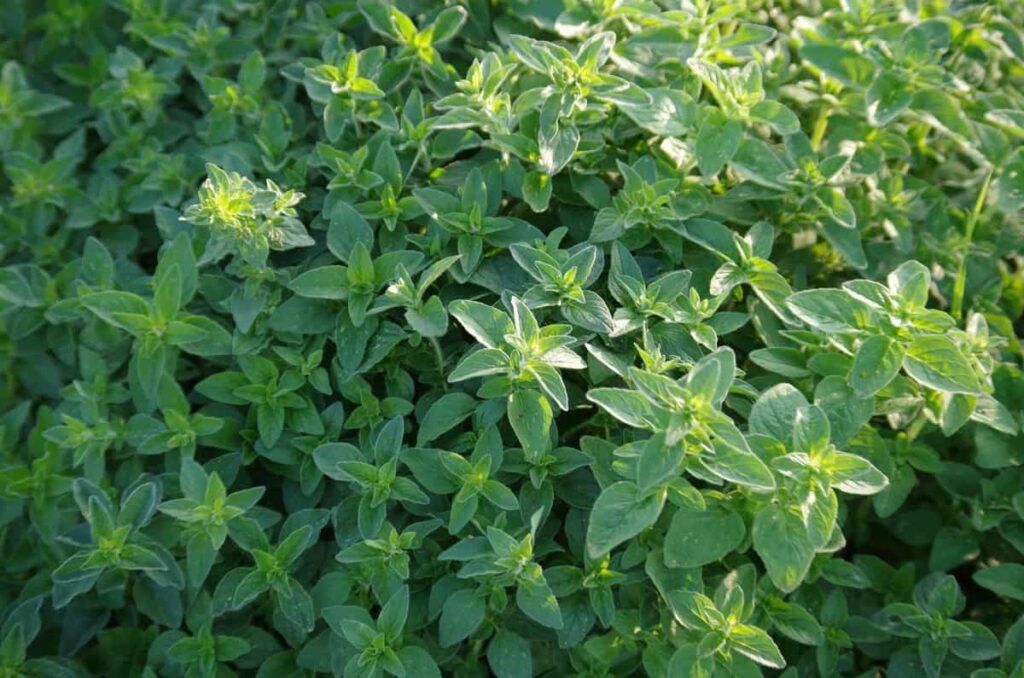
Common pests and diseases of Marjoram
- Pests and diseases are common occurrences in Marjoram gardens. Some of the most common pests include aphids, whiteflies, and spider mites. You can control these pests with insecticidal soap or horticultural oil.
- Diseases of Marjoram include root rot, powdery mildew, and downy mildew. These diseases can be controlled with fungicidal sprays or by removing affected plants.
Conclusion
Growing Marjoram from seed can be a rewarding experience, and it’s not as difficult as you might think. You can have a healthy crop of this delicious herb with patience and the right conditions in no time. Growing Marjoram from seed to harvest is an easy process that can be completed in just a few short months. With just a little care and attention, you can enjoy a bountiful harvest of this fragrant and flavorful herb all season long.
- Gardening Techniques in Planting Vegetables
- Where to Place Indoor Plants in Your Home
- How to Grow Tomatoes Organically at Home: A Comprehensive Guide
- Organic Gardening on a Budget: Low-Cost Methods and Materials
- Gongura Seed Germination and Planting Methods
- Cabbage Seed Germination and Selection
- Broccoli Seed Germination and Selection
- Asparagus Seed Germination and Variety Selection
- Seasonal Flower Gardening: Best Practices for Spring, Summer, Fall, and Winter
- How to Grow Hibiscus from Flower
- Plantation Ideas for Home Decoration: A Beginners Guide
- Flower Garden Designs and Layouts for Beginners
- Planting and Spacing Techniques in Papaya: A Beginner’s Guide
- Growing Gold: Essential Techniques for Planting Pineapples
- How to Make Kalanchoe Plant Bushy: Home Remedies and Solutions
- 11 Reasons Why Your Gardenia is Not Blooming: Home Remedies and Solutions
- Eco Elegance: The Guide to Designing a Drought-Tolerant Landscape
- Gardening on a Slope: Strategies for Hillside Landscaping
- Nourish and Flourish: Top Organic Mulches for Thriving House Plants
- Everything You Want to Know about Indian Mogra Flower: Discover Uses and Growing
- Green Thumb Success: Expert Tips for Cultivating Greenhouse Pumpkins All Year Round
- Maximize Growth & Flavor: The Ultimate Guide to Companion Planting in Herb Gardens
- How to Control Rhododendron Problems Naturally: Home Remedies and Organic Ways to Fix Them
- Natural Magic: The Remarkable Benefits of Cinnamon for Plants
- Best Steps to Revive Dying Tulip with Natural and Organic Treatment
- 10 Reasons Why Your Angel Trumpet is Not Blooming: Remedies and Treatment
- How to Fix Periwinkle Leaf and Flower-Related Problems: Natural Remedies and Solutions
- How to Fix Zinnias Leaf and Flower Problems: Discover Natural and Home Remedies
- Organic Steps to Induce Lemon Tree Flowers: A Comprehensive Guide
- Bloom Booster: Crafting the Perfect Homemade Bougainvillea Fertilizer
- Optimizing Growth: A Guide to Applying NPK Fertilizer for Potted Plants
- 10 Best Homemade Fertilizers for Rubber Plant: DIY Recipes and Application Method
- How to Boost Female Pumpkin Flowers: Effective Steps for More Flowers and High Yields
- Transform Your Indoor Garden: Top Benefits of Pink Salt for Houseplants
- 10 Best Homemade Fertilizers for Peacock Plants (Calathea): Easy DIY Guide
- Unlock Blooms: 9 Reasons Why Your Potted Chrysanthemum is Not Blooming